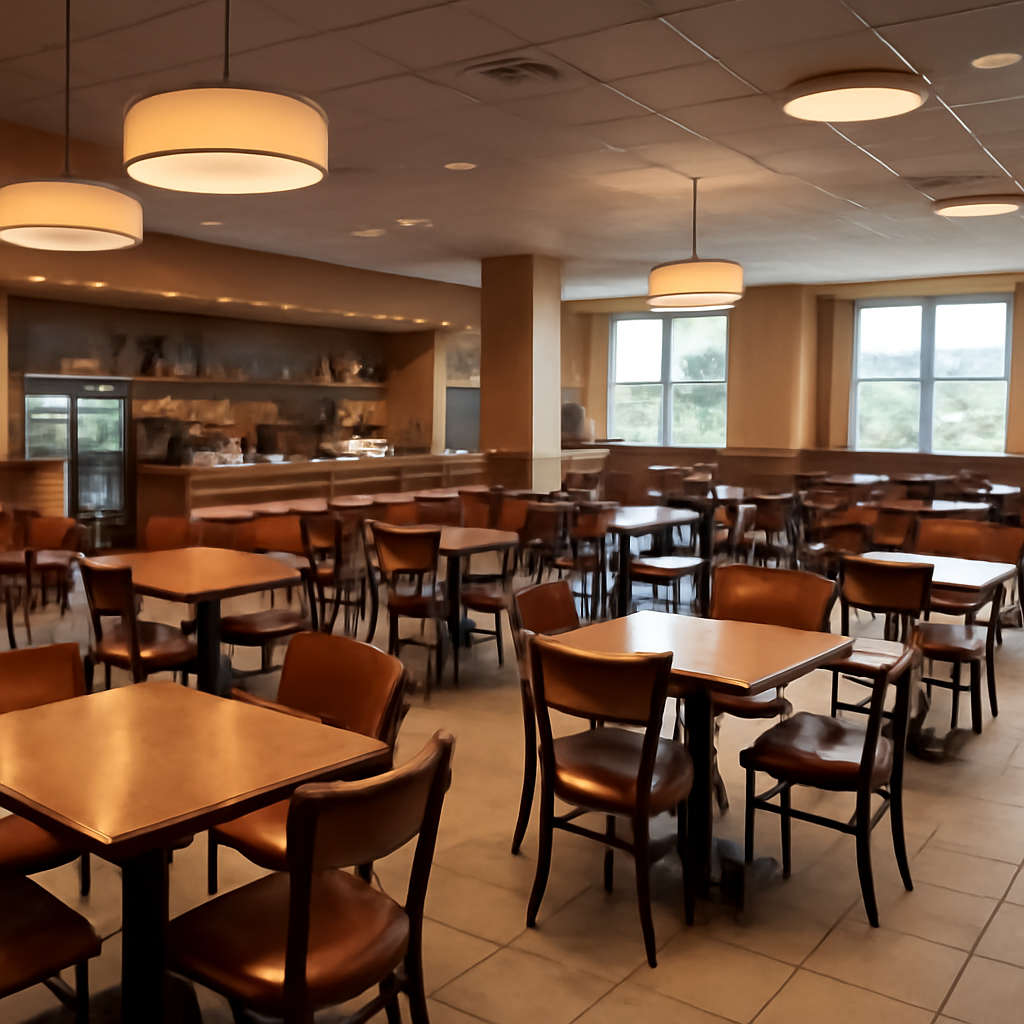Key Takeaways
- Cafe locations are often situated within or near urban centers, serving as social hubs for locals and visitors.
- Cafeterias are typically larger, institutional spaces found in places like schools, hospitals, or government buildings.
- The layout of cafes favors cozy seating arrangements, encouraging lingering conversations, while cafeterias prioritize quick service and high turnover.
- Design and ambiance differences reflect their purposes; cafes aim for comfort and intimacy, while cafeterias focus on efficiency and capacity.
What is Cafe?

A cafe is a small establishment where people gather to enjoy coffee, tea, and light snacks in a relaxed atmosphere. It often serves as a social spot for individuals or groups looking for a comfortable setting.
Location and Atmosphere
Cafes are usually found in city centers, shopping districts, or trendy neighborhoods, offering a cozy yet stylish environment. The ambiance is designed to promote lingering conversations and casual meetings.
Menu and Offerings
The menu typically features specialty coffee drinks, teas, pastries, and small plates. Emphasis is placed on quality and presentation, often appealing to a clientele seeking a leisurely experience.
Design and Layout
Interior design favors warm lighting, comfortable seating, and decorative elements that create an inviting vibe. Spaces often include outdoor seating areas for pleasant weather days.
Social and Cultural Role
Cafes serve as cultural hubs where people meet for discussions, artistic events, or quiet reading. They often support local artists by displaying their work or hosting performances.
Ownership and Business Model
Most cafes are independently owned or part of small chains, focusing on community engagement and personalized service. Branding emphasizes ambiance and unique offerings to attract regular customers.
What is Cafeteria?

A cafeteria is a large, institutional space designed to serve many people quickly, often found within schools, hospitals, or corporate buildings. Its primary purpose is providing fast, efficient meals in a functional setting.
Location and Environment
Cafeterias are integrated into larger facilities, situated in accessible areas to accommodate large groups efficiently. The environment is practical, with minimal decorative elements.
Menu and Food Service
Menus are usually standardized, with a focus on variety and quick preparation. Although incomplete. Self-service counters or tray line systems are common for fast throughput.
Layout and Seating Arrangements
The layout favors long tables or rows of seats to maximize capacity. The design supports high-volume service with minimal aesthetic focus.
Functionality and Usage
Cafeterias prioritize swift meal delivery, often operating on set schedules. They cater to a diverse clientele, including students, employees, or patients needing quick sustenance.
Ownership and Management
Usually managed by organizations or institutions, cafeterias operate under strict guidelines to ensure efficiency and cost-effectiveness. They may employ staff focused on speed and orderliness rather than ambiance.
Comparison Table
Below is a comparison of key aspects between Cafe and Cafeteria, focusing on real-world differences in their operation and environment.
| Parameter of Comparison | Cafe | Cafeteria |
|---|---|---|
| Primary customer focus | Leisure and socialization | Quick meals for large groups |
| Typical location | Urban neighborhoods and shopping districts | Educational institutions, hospitals, corporate buildings |
| Menu style | Specialty drinks and artisanal snacks | Standardized, broad-range meals |
| Service style | Counter or table service, often personalized | Self-service or tray line system |
| Interior design | Comfortable, cozy, artistic | Functional, space-efficient |
| Customer experience | Relaxed, lingering possible | Fast, efficient, high turnover |
| Ownership type | Independent or small chain | Institutionally managed |
| Ambiance | Warm, inviting, artistic | Practical, utilitarian |
| Operating hours | Flexible, often open late | Set schedules aligned with institutional hours |
| Price range | Moderate, premium for ambiance | Affordable, bulk pricing |
Key Differences
Here are some of the most notable distinctions:
- Customer environment — Cafes are designed for social interaction, while cafeterias are for quick, functional meals.
- Location setting — Cafes often sit in lively city areas, cafeterias are embedded within larger facilities like schools or hospitals.
- Menu variety — Cafes emphasize specialty drinks and artisanal snacks, cafeterias offer standardized, broad meals.
- Service approach — Cafes provide personalized service, cafeterias rely on self-service systems for speed.
- Design focus — Cafes prioritize ambiance and comfort, cafeterias focus on maximizing capacity and efficiency.
- Operational style — Cafes are generally flexible in hours, cafeterias follow strict schedules aligned with institutions.
- Pricing — Cafes tend to be pricier owing to ambiance, cafeterias are budget-friendly for large groups.
FAQs
Are cafes more suited for long visits or short stops?
Cafes are designed to encourage lingering, so they are more suited for long visits, conversations, or remote work, unlike cafeterias which prioritize quick turnover.
Can a cafeteria ever serve specialty coffee like a cafe?
While traditionally focused on standard menus, some cafeterias in upscale settings or with dedicated baristas may serve specialty coffee, but it’s less common.
Do cafes typically support local artists and events?
Yes, many cafes incorporate local artwork, host performances, or cultural events, fostering community engagement beyond just serving beverages and snacks.
What role does ambiance play in customer choice between the two?
Ambiance influences customer preference significantly; cafes attract those seeking a cozy, aesthetic environment, whereas cafeterias appeal to those needing efficiency and convenience.
